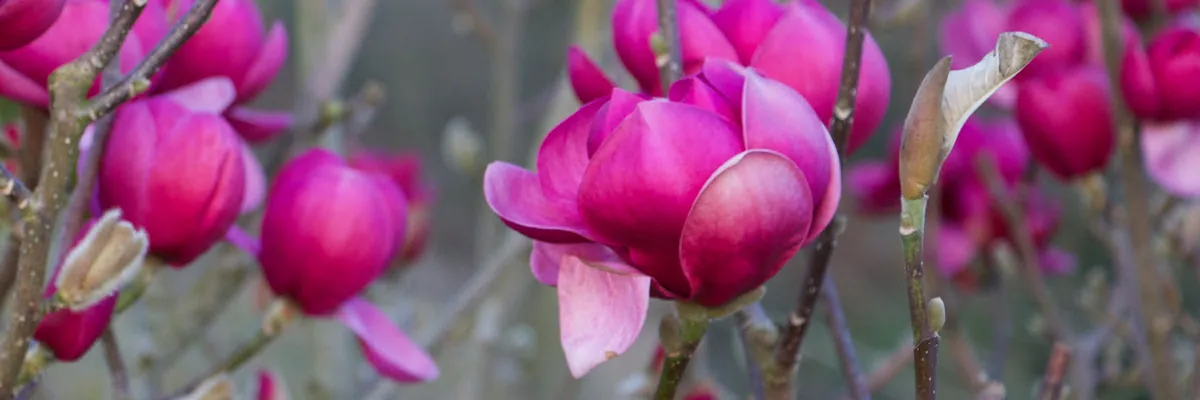Every year, at the end of winter, a new magnolia season begins. MAGNOLIA ‘Black Tulip’ belongs to our favorites with its flowers that vary from red to purple depending on the temperature, the type of soil and the age of the plant. The blooms appear before the leaves (see photo) on bare wood.
Its oval and rather compact shape makes it a small magnolia. This selection offers the particularity of a flowering that is very spread out over the season. Therefore, it continues to bloom despite small spring frosts.
In addition, our nursery’s website offers other unusual magnolias, such as:
- MAGNOLIA grandiflora
- MAGNOLIA grandiflora ‘Little Gem’
- MAGNOLIA kobus
- MAGNOLIA sieboldii
- MAGNOLIA stellata
- MAGNOLIA sprengeri var. Diva ‘Eric Savill’
- MAGNOLIA tripetala
- MAGNOLIA ‘Blue Opal’
- MAGNOLIA x ‘Daphne’
- MAGNOLIA ‘Felix Jury’
- MAGNOLIA ‘Livingstone’
- MAGNOLIA x ‘Sunsation’
- MAGNOLIA x ‘Yellow Bird’
- MICHELIA laevifolia ‘Fairy Honey Velvet’ (R)
How to grow MAGNOLIA ‘Black Tulip’
Given its small growth, this magnolia lends itself even to small and large gardens.
First, you don’t need an acidic soil because this magnolia will adapt very well, if you prepare a good planting hole. To achieve this, incorporate a large bag of excellent quality planting compost into the soil of your garden (avoid pure peat or heather soil!). For more detailed explanations, follow the instructions here.
Second, plant this unusual magnolia in full sun, in a moist spot or with medium humidity. Finally, choose a place with light or normal soil. It survives without difficulty in temperatures below −20° C.
History and Origin
To begin with, magnolias belong to a genus of around 210 to 340 species that develop interesting flowers. The genus is named after the French botanist Pierre Magnol.
These wonderful plants appeared before the evolution of bees. Indeed, magnolia fossils have been found in China.
In addition, deciduous and persistent forms exist. However, the number of persistent varieties is extremely limited.
Magnolias primarily count the USA and Asia as their natural habitats.
Nevertheless, the flowers of many species are considered edible. The English use petals of MAGNOLIA grandiflora as a condiment. Furthermore, in Asian cuisine, the flowers are used to flavor rice. Finally, in Japan, the young leaves and flower buds of MAGNOLIA hypoleuca are boiled and eaten as a vegetable.




Leave a Reply